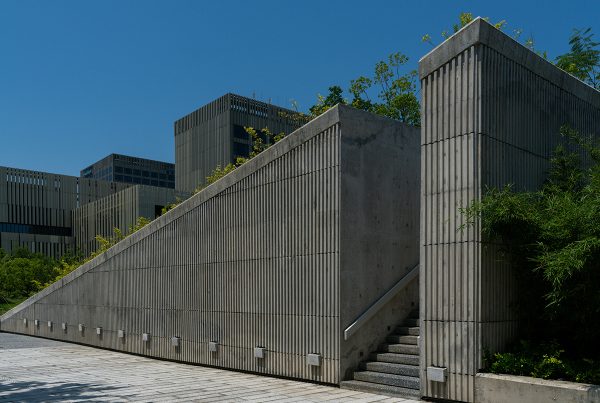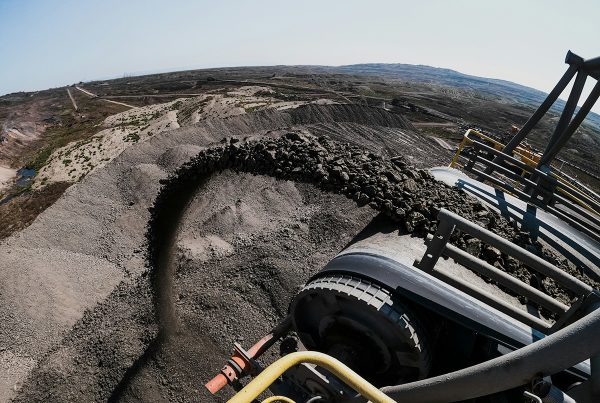Engineering, construction and technology play a role in combating climate change. Thanks to a growing focus on the circular economy and technological advancements, 2025 is a pivotal year for sustainable design.
Sustainable Design Trends in 2025
Sustainable construction typically aims to reduce waste and increase resource efficiency by focusing on proactive waste prevention and recycled materials. This supports the environment and can minimize production costs. Truly sustainable structures have measurable impacts and can be rescaled to best meet an area’s needs.
Key trends shaping sustainable design in 2025 are:
- Digitalization: Digitally representing data and simulating projects helps teams optimize operations and predict environmental impacts.
- Smart technology: Integrating advanced technology — like AI and Internet of Things (IoT) devices — can save costs and resources through benefits like equipment monitoring, which enables predictive maintenance.
- The circular economy: This production and consumption model encourages recycling and using recycled materials to reduce waste generation.
- Material innovation: Improving existing materials can help reduce reliance on materials like plastic, which pollute waterways, harm marine life and affect the food supply.
- Climate resilience: This can involve changes as big as hail-resilient roofing or siding, but it also includes simple techniques like sealing gaps in structures’ envelopes. Addressing drafts in windows and doors helps regulate indoor temperatures — especially during winter and summer — and reduces strain on HVAC systems, leading to lower energy bills and greater climate resilience.
The Top 9 Sustainable Designs of 2025
Explore some of this year’s most notable leaps in sustainable design with real-life examples.
1. Net-Zero Emissions Building
A net-zero emissions building pioneers carbon neutrality by aiming to produce as much energy as it consumes, reducing its carbon footprint. Renewable energy resources power these all-electric structures.
There is an international race to build the tallest passive building in the world. In Brooklyn, New York, One Third Avenue is planned to be a 63-story tower with residential, retail and office space. Close behind is Canada’s Earth Tower, designed to stand 40 stories tall.
2. Modular Timber Housing
This sustainable design trend focuses on circularity in action. Cell structures are produced with prefabricated timber and renewable materials. They are rapidly deployed to form neighborhoods, and the short construction time helps minimize emissions.
Build Canada Homes proposes that modular construction can reduce emissions by over 20% and reduce build times and costs. Canada’s vision for Toronto’s Intelligent City is a nine-story, carbon-neutral, modular housing unit.
3. Smart Water Infrastructure
This adaptive and resilient infrastructure promotes water monitoring and reuse, especially in climates with long dry seasons or droughts. IoT sensors can monitor water consumption and quality.
The LA Sanitation and Environment and the Los Angeles Department of Water and Power are designing one of the largest water reuse projects in the United States. The Donald C. Tillman Advanced Water Purification Facility will allow the city to recycle wastewater into drinking water using advanced treatment processes.
4. Solar-Powered Transit Hubs
The transportation industry is integrating solar power as a renewable alternative to fossil fuels. It can help reduce harmful carbon emissions and air pollution, creating more pleasant environments for surrounding communities.
Martha’s Vineyard in Massachusetts is working toward a fully solar-powered fleet of buses powered by a microgrid. Any unused energy can go back to the grid, reducing clean energy waste.
5. Green Roof Campuses
Nature-based solutions offer numerous benefits, including improved air quality, energy efficiency and urban cooling. The soil on a green roof helps regulate buildings’ temperature, while the vegetation provides shade.
Rainbow International School in Nellore, India, is a nature-based educational environment that welcomes natural light and is populated with living greenery.
6. Recycled Concrete
The concrete industry has a large carbon footprint. Turning recycled concrete into recycled concrete aggregate closes the materials loop by extending the concrete’s lifespan. This innovative material can be used for buildings, bridges and other structures.
The University of Nebraska and Hawkins Construction are creating innovations in recycled aggregates. They intend to strengthen the recycled concrete through a chemical reaction called carbonation. This innovation has even led to building infrastructure like roads being constructed from recycled plastic.
7. Digital Twin Districts
Digital twins are virtual representations that simulate physical conditions. Analyzing an actual structure in real time using a digital twin helps with predictive maintenance and energy optimization.
The National Digital Twin Programme in the United Kingdom is developing tools for adaptable digital twin technology for urban areas’ energy, water and mobility operations.
8. Adaptive Reuse for Affordable Housing
By giving historic or underutilized buildings a new purpose, construction resources and costs are much lower than when constructing an entirely new building. Teams can preserve a building’s aesthetic and framework while adding modern amenities and energy-efficient systems.
The Collegiate Gothic Pancratia Hall in Denver was converted to house multiple families, serving as an example of how historic buildings can be adapted for modern living. Original features like exterior masonry and chemistry lab glass cabinets were integrated into the new, all-electric lofts.
9. Climate-Resilient Coastal Infrastructure
Adapted infrastructure can withstand the impacts of climate change and embrace natural biodiversity. Natural features like wetlands and dunes act as a buffer to protect coastlines from flooding and erosion.
The Wild Mile in Chicago is a prime example of this sustainable design concept. It uses floating pontoons made of environmentally friendly materials to create ADA-accessible boardwalks that rise and lower with changing water levels. Plants and small river animals inhabit the greenspace as they might have before the city’s development.
Continuing the Sustainable Design Revolution
These sustainable designs and many others are setting new standards in construction, finding ways to minimize adverse environmental impacts. As technology evolves, designers will continue to find ways to make infrastructure more sustainable.












